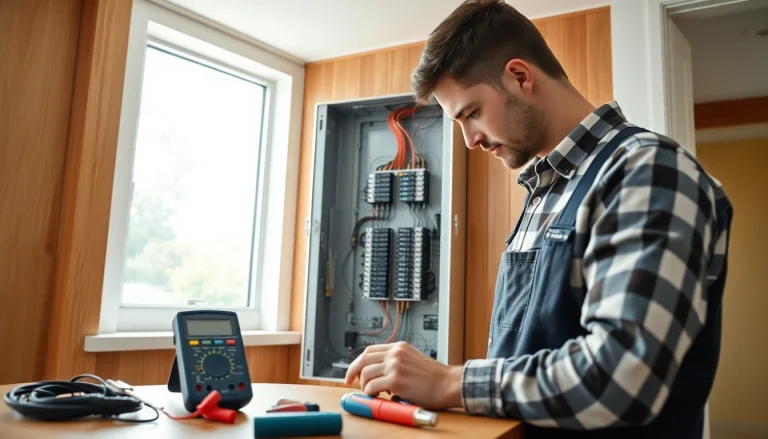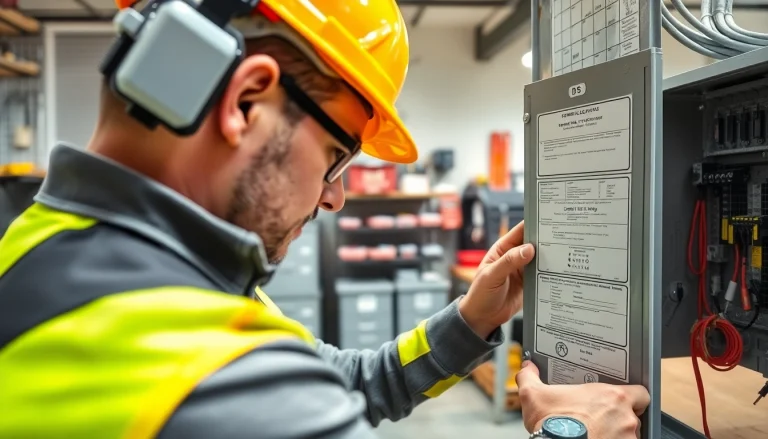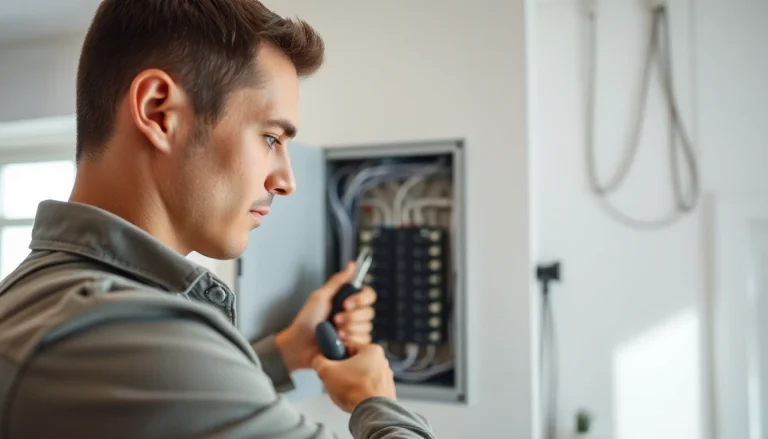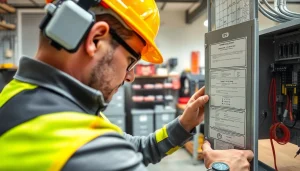Understanding the Basics of an Electrical Panel
An electrical panel, often known as a breaker box or distribution board, serves as the core hub of your home’s electrical system. It is essential for managing the distribution of electrical power throughout your home, serving as a centralized point where power is allocated to different circuits and devices. In cases of electrical faults, it also acts as a safeguard, cutting off electricity to prevent hazards such as fires or equipment damage. Understanding the nuances of an electrical panel is vital for homeowners, especially when considering upgrades or replacements. Let’s delve deeper into the workings of an electrical panel, its components, and how it functions within your home.
What is an Electrical Panel?
At its simplest, an electrical panel is a metal box that houses various components crucial to an electric system. It receives electricity from a utility company, subsequently directing it into smaller circuits that branch out throughout your home. Each circuit is equipped with circuit breakers or fuses that can interrupt power in case of overloads or faults, thus protecting your home from electrical damage.
Components of an Electrical Panel
Understanding the main components of an electrical panel will help you appreciate its functionality and importance. Here are the key elements:
- Main Breaker: The master switch that disconnects power from the entire panel, controlling the amount of incoming electricity.
- Branch Circuits: These are individual circuits that power different areas of the home. Each is protected by a circuit breaker.
- Circuit Breakers/Fuses: Devices that automatically interrupt the electrical flow in the event of a fault or overload.
- Bus Bars: Conductive strips that distribute electricity to various breakers.
- Grounding System: Provides safety against electrical shocks by grounding excess electricity.
How Electrical Panels Function
The journey of electricity begins at your electrical panel, which receives high-voltage power from the utility grid. The panel steps down this voltage and distributes it through branch circuits that reach various parts of your home. Here’s how it works in a step-by-step process:
- Electricity enters the panel through the main power line.
- The main breaker controls the entire circuit’s supply, allowing for shutdown in case of emergencies.
- Electricity travels through bus bars to each circuit breaker according to demand.
- When a circuit experiences an overload or fault, the corresponding circuit breaker trips to prevent damage.
Signs You Need to Upgrade Your Electrical Panel
Recognizing when it’s time to upgrade your electrical panel is crucial for maintaining safety and functionality in your home. Here are some telltale signs that indicate an upgrade might be necessary:
Increased Energy Demands
As homes incorporate more electronics and appliances—such as smart devices, refrigerators, and HVAC systems—the demand for electricity rises. If you find that you are constantly needing to add circuits, it may be a sign that your current panel cannot handle the electrical load, warranting an upgrade.
Frequent Circuit Breaker Trips
Regularly tripping breakers can signal that your electrical panel is overloaded. Each breaker has a specific capacity, and if yours is constantly tripping, it may be a sign of failure in the panel or an indication that it’s time to upgrade to a unit that can handle more current.
Signs of Aging Electrical Panels
Older panels, particularly those over 20 years, may not meet the electrical needs of modern homes and can pose safety risks. Look out for signs such as:
- Rust or corrosion on breakers or panel surface.
- Burn marks around the panel.
- Buzzing sounds or hot covers.
Choosing the Right Electrical Panel for Your Home
Selecting an appropriate electrical panel involves understanding your home’s needs and the available options. Here are essential aspects to consider when making your choice:
Types of Electrical Panels
There are several types of electrical panels to consider based on your specific requirements:
- Standard Breaker Panel: Ideal for general use in most households.
- Sub-Panels: Used to extend existing systems to different areas of the home without overloading the main panel.
- Smart Panels: Modern alternatives offering monitoring features and energy management capabilities.
Optimal Capacity for Your Needs
When choosing an electrical panel, it’s important to evaluate how much electricity you require based on your household’s size, number of electrical devices, and overall electricity usage. Common panel sizes are:
- 100 Amps: Suitable for smaller homes with limited electrical needs.
- 200 Amps: Most recommended for average-sized homes with increased electrical demands.
- 400 Amps: Ideal for larger homes or properties with extensive electrical systems and multiple high-wattage appliances.
Recommended Brands and Models
When selecting an electrical panel, it is essential to consider reputable brands that offer reliability and quality. Some of the most recommended brands include:
- Square D: Known for its durable and reliable products.
- Eaton: Provides innovative solutions catering to modern needs.
- Siemens: Offers versatile panels suitable for various homes.
The Installation Process for an Electrical Panel
Installing a new electrical panel requires careful planning and execution to ensure efficiency and safety. Below is a structured approach to managing this process:
Preparing for Installation
Before beginning the installation, several preparations need to be made, including:
- Assessing your existing electrical system to identify necessary upgrades.
- Acquiring the necessary permits from local authorities.
- Gathering required tools and components.
Hiring a Licensed Electrician
It’s critical to hire a licensed electrician for both safety and compliance with local building codes. Ensure that the electrician has experience with your specific type of electrical panel and system. During the selection process, ask for references and check their credentials, including licenses and certifications.
Post-Installation Safety Checks
Once your new panel is installed, conducting a safety check is imperative. Key aspects to examine include:
- Ensuring all connections are tight and secure.
- Testing the breakers to confirm they function correctly.
- Verifying grounding and bonding of the panel are appropriately executed.
Cost Considerations for Upgrading an Electrical Panel
The cost of upgrading an electrical panel can vary significantly based on several factors. Understanding these can help you budget effectively and make informed decisions:
Average Costs and Factors Influencing Pricing
On average, homeowners may spend between $1,500 to $3,000 for panel upgrades, depending on factors such as:
- The panel’s amperage and features.
- The complexity of installation, including new wiring.
- The location of your home and local labor costs.
Potential Savings from Upgrading
Upgrading your electrical panel can lead to substantial savings in the long run by reducing energy costs and preventing costly repairs due to electrical system failures. A modern panel also increases the overall efficiency of electricity use within the home, which can be a significant financial benefit.
Financing Options for Homeowners
Recognizing that the costs of upgrading an electrical panel can be substantial, several financing options may be available. Homeowners can explore:
- Home Equity Loans: Leveraging your home’s value to secure financing.
- Personal Loans: Unsecured loans can cover upfront costs.
- Energy Efficiency Programs: Many utility providers offer rebates or low-interest loans for electrical upgrades.
Ultimately, understanding and maintaining your electrical panel is paramount for the safety and efficiency of your home’s electrical system. By being aware of the signs indicating a need for an upgrade, the types of panels available, and making informed choices during installation, homeowners can ensure they are prepared for their electrical needs now and in the future.







